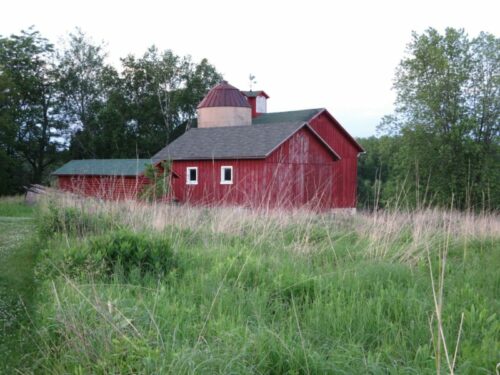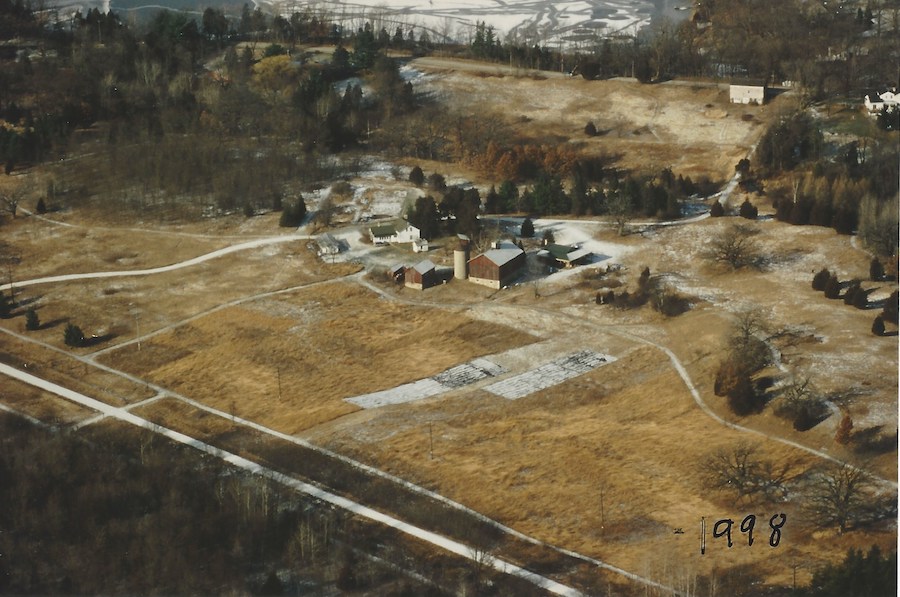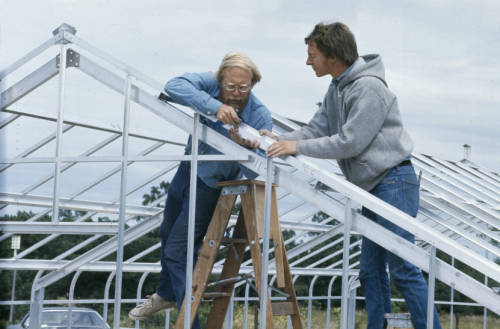
In 1967, Gertrude Sherman donated a 92-acre farm to the University of Wisconsin with the expectation that the land would be maintained in a natural state. She later contributed an additional 6 acres, including access to a small lake. The last crop of corn was taken off the land in 1967.
The site’s natural features include rolling glacial deposits covered with old field vegetation, 20 acres of oak woods, a small lake with marshlands, a shallow pond and a cold water stream. A farmhouse and outbuildings are maintained by the resident manager.
Digital Image Archive
The UWM at Waukesha Field Station digital image archive is now live! The collection features images from the first 50 years of the UW-Milwaukee at Waukesha Field Station as captured by the first field station manager, Marlin Johnson. The images capture the transformation of the land from a working farm to property that contains restored open-oak prairie and plant communities from throughout Wisconsin. In addition the images capture the transformation of the Chicago Northwestern RR to the Glacial Drumlin Trail, aerial views, construction of new buildings and refurbishment of original farm buildings, construction of wood fired kilns , on-site classes, trail-building, prairie and native habitat restoration, invasive plant control, Scuppernong Creek and Henrietta Lake. This archive was made possible through community financial donations.


Restoration Activities
For more than 125 years, the acreage had grown corn and other crops. Since taking ownership, UWM at Waukesha has been restoring the land to support communities of plants and animals native to Wisconsin. Each year, the diversity of plants and animals increases.
The university’s express purpose for managing the site is to create a diverse pattern of natural communities for maximum teaching and scientific research value. Examples of these communities are prairie, oak openings, oak forest, pine forest and open meadow. The plantings for these communities are expected to continue for several generations.
The station also has a thriving artistic culture, with the use of the unique Anagama kiln on the property and the diverse ecological communities inviting people to explore art and nature projects.